
Eric I, also known as Eric the Good, was King of Denmark following his brother Olaf I Hunger in 1095. He was a son of Sweyn II. His mother's identity remains unknown. He married Boedil Thurgotsdatter.
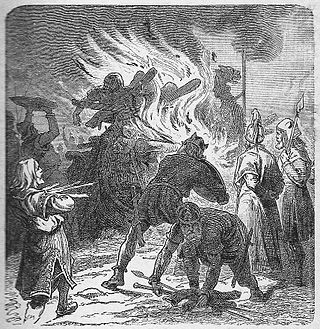
Sigurd Ring according to legend was a king of the Swedes, being mentioned in many old Scandinavian sagas. According to these sources he was granted rulership over Sweden as a vassal king under his uncle Harald Wartooth. Later he would take up arms against his uncle Harald in a bid to overthrow him and take the crown of Denmark, a conflict which Sigurd eventually won after the legendary Battle of the Brávellir, where it is said that Odin himself intervened and killed Harald. In the Sagas, Sigurd is also known for being the father of the Norse Viking hero and legendary king of Denmark and Sweden, Ragnar Lodbrok. According to Bósa saga ok Herrauds, there was once a saga on Sigurd Ring, but this saga is now lost.

Harald Sigurd Johan Sæverud was a Norwegian composer. He is most known for his music to Henrik Ibsen's Peer Gynt, Rondo Amoroso, and the Ballad of Revolt. Sæverud wrote nine symphonies and a large number of pieces for solo piano. He was a frequent guest conductor of his own works with the Bergen Philharmonic Orchestra.
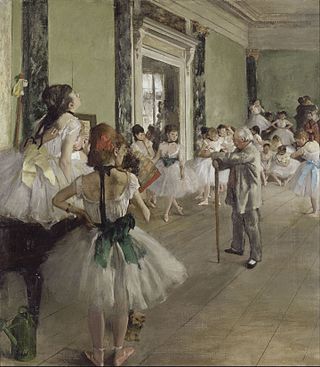
A ballet master is an employee of a ballet company who is responsible for the level of competence of the dancers in their company. In modern times, ballet masters are generally charged with teaching the daily company ballet class and rehearsing the dancers for both new and established ballets in the company's repertoire. The artistic director of a ballet company, whether a male or female, may also be called its ballet master. Historic use of gender marking in job titles in ballet is being supplanted by gender-neutral language job titles regardless of an employee's gender.

The Fairhair dynasty was a family of kings founded by Harald I of Norway which united and ruled Norway with few interruptions from the latter half of the 9th century. In the traditional view, this lasted until 1387, however, many modern scholars view this rule as lasting only three generations, ending with Harald Greycloak in the late 10th century. The moniker "Fairhair dynasty" is a retrospective construction: in their lifetime what little traces there are refer to them consistently as "Ynglings".
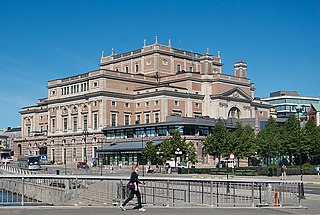
The Royal Swedish Ballet is one of the oldest ballet companies in Europe. Based in Stockholm, Sweden, King Gustav III founded the ballet in 1773 as a part of his national cultural project in response to the French and Italian dominance in this field; he also founded the Royal Swedish Opera and the Royal Dramatic Theatre. All of these were initially located in the old theatre of Bollhuset. The troupe was founded with the opening of the Royal Swedish Opera, which has served as its home since that time.
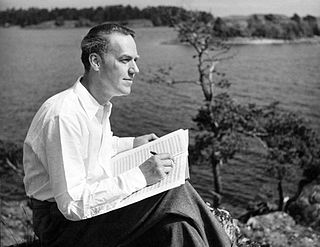
Sigurd Christian Jag Erland Vogt von Koch was a Swedish composer. He wrote symphonies, ballets, an opera, and other compositions, including music for film.
Ulrika Åberg (1771–1852) was a Swedish ballerina. She was active in the Royal Swedish Ballet in 1782-95. She was one of the first native ballet dancers in the Royal Swedish Ballet.
Léonne-Julie Alix de la Fay, also known as Julianne Bournonville and Madame Alix, was a French ballet dancer and dance instructor. She played an important part in the development of the Royal Swedish Ballet. She was the sister of the famous ballet dancer Antoine Bournonville and the aunt of August Bournonville.
Sophie Marguerite Daguin was a French ballet dancer and choreographer. She spent her career in Sweden, where she became a star ballerina and ballet mistress of the Royal Swedish Ballet, and the principal of the ballet school.

Antoine Bournonville was a French ballet dancer a choreographer, active in the Royal Swedish Ballet and the Royal Danish Ballet and eventually ballet master in the latter. He is considered to have played a great role in the development of the ballet in Scandinavia. He was the father of August Bournonville.

Anders Selinder, was a Swedish ballet dancer, choreographer and director. He was Ballet master of the Royal Swedish Ballet in 1833–1856.
Thomas Lund is the head master of The Royal Danish School of Ballet in Copenhagen. Lund admitted to The Royal Danish School of Ballet in 1986 aged 11. He became apprentice in 1991, member of the corps de ballet of The Royal Danish Ballet in 1993, soloist in 1996 and was appointed principal dancer in 2000. In September 2012 Lund retired as a Principal Dancer to become the head master of The Royal Danish School of Ballet He held that position until June 2022.
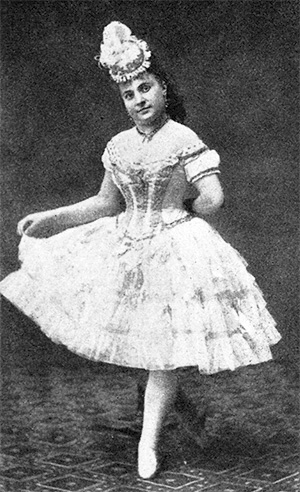
Hilda Maria Lund was a Swedish ballerina at the Royal Swedish Ballet at the Royal Swedish Opera in Stockholm.

Per Sigurd Agrell was a Swedish poet, translator, runologist and professor of Slavic languages at Lund University.

Ludvig Gade born in was a Danish dancer and mime. Ludvig Gade was Director of Royal Danish Ballet 1877–1890.

Events from the year 1772 in Sweden

Sigurd Leeder was a German dancer, choreographer and dance education theorist. He was born in Hamburg on 14 August 1902, the son of Carl Eduard Gottfried Leder, lithographer, and Martha Auguste Anna Henriette Friedrich. He died in Herisau, Switzerland, on 20 June 1981. He developed a method of teaching expressive dance and contributed, with Albrecht Knust, to the development and dissemination of labanotation, which pioneered the written language of symbols to record and represent modern dance.

Badstuestræde 18 is a Neoclassical property in Badstuestræde in the Old Town of Copenhagen, Denmark, constructed for brewer Peter Møller as part of the rebuilding of the city following the Copenhagen Fire of 1795. It was listed in the Danish registry of protected buildings and places in 1918. Notable former residents include the philologist Jacob Baden, actor Peter Jørgen Frydendahl, ballet master Carl Dahlén, actress and opera singer Johanna Elisabeth Dahlén and later ballet master of the Royal Swedish Ballet, Sigurd Harald Lund.
Toni Lander née Pihl Petersen (1931–1985) was a Danish ballerina who specialized in the ballets of August Bournonville. After becoming a solo dancer with the Royal Danish Ballet in 1950, she was a guest dancer with the Original Ballet Russe in 1951. She was then engaged by the Paris Opera Ballet until 1954. Lander also appeared with the London Festival Ballet in the late 1950s and with the American Ballet Theatre in the 1960s. After a few years back in Denmark in the early 1970s, in 1976 she joined the Ballet West in Salt Lake City. After a short illness, she died there of cancer in May 1985.















